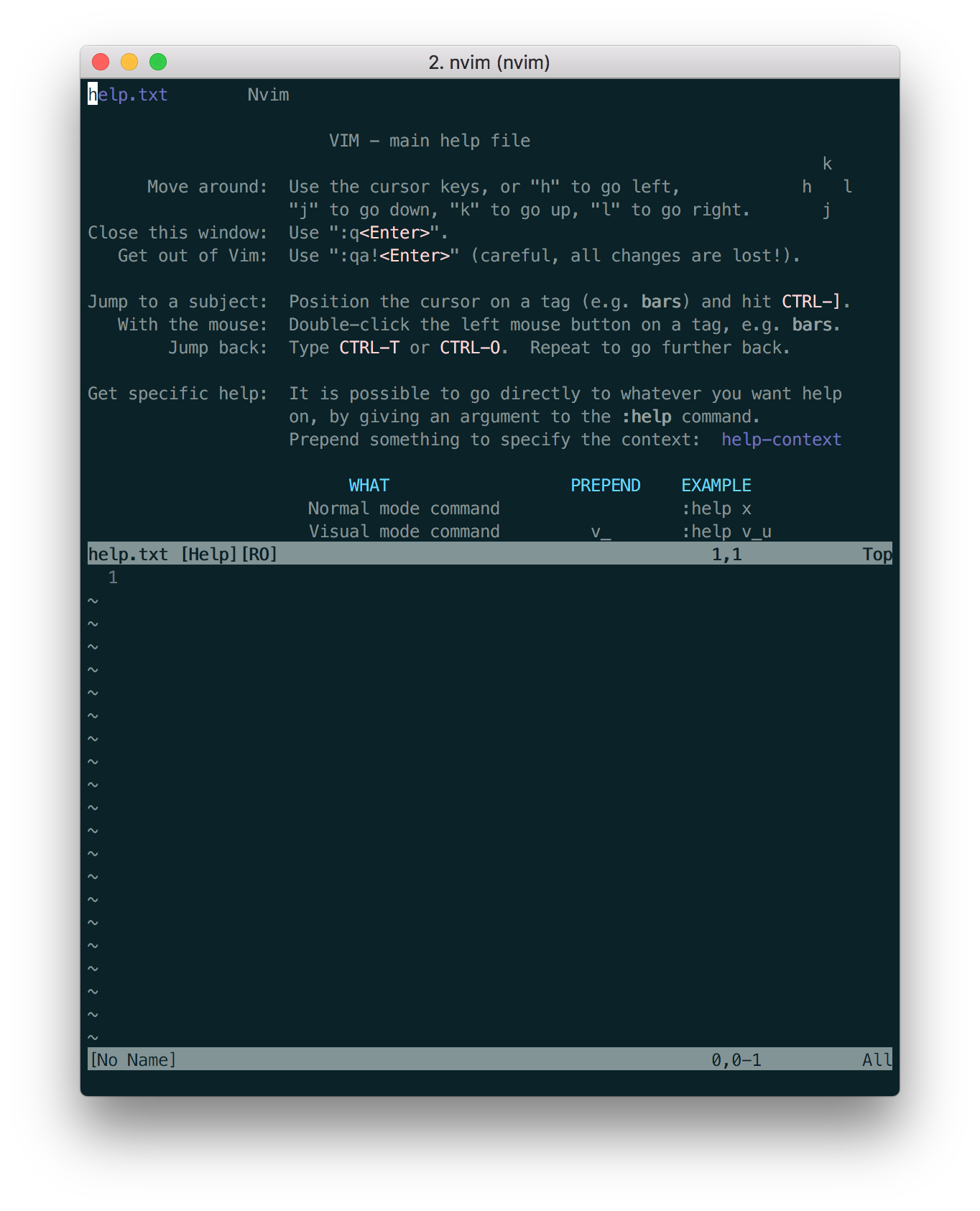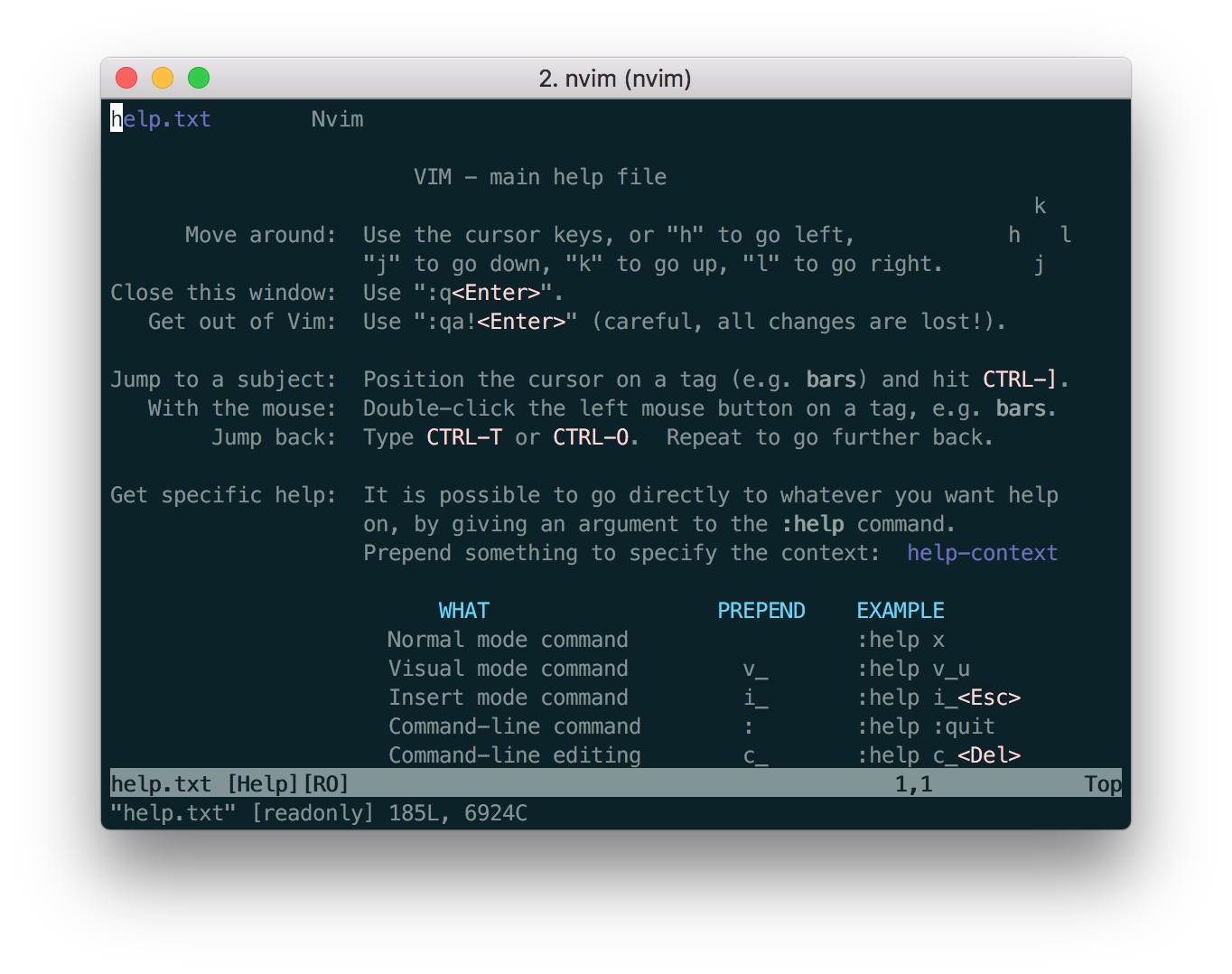Help
Vim ships with VERY extensive documentation. The main help file is accessible like so:
:help
This can be abbreviated:
:he

We navigate inside the help documents using regular Vim motions,
(such as j for next line, <CTRL-F> for page down, and so on).
Note also that help opens in a separate WINDOW - our previous file (No Name) is still there!
This can be visualized a bit easier if we extend the height of our terminal:

We can make the help file the ONLY window visible with only:
:only
We can also combine commands in the Command Line using the | operator:
:he | only

Help for specific topics
We can also access help for a specific topics. Let's look at the documentation
for w, which is the motion command for moving the cursor forward by one word.
:he w
Help search
We can also get a list of all available commands that include the current
string, by pressing <CTRL-D>:
:he w<CTRL-D>
That's quite the list!
Note that there are separate help articles for w and :w
wis the motion command, whereas:wis the save command.
Alternatively, we can use tab completion:
:he w<TAB>
Using Help
Let's go back to the main help page.
:help
The help file starts with useful tips, such as the keys used for basic navigation.
In Vim help, we can "Jump to a subject". These sections are accessed using TAGS, the hot-links to another section in the help manual. They are highlighted in a particular color.
When the cursor is positioned over a tag, pressing <CTRL-]> will jump FORWARD to that tag.
Pressing <CTRL-T> will go BACK one tag.
Tags
Tags work by using the internal "tag stack", a list of visited tags.
To demonstrate this, navigate to a few help sections using <CTRL-]> over their tags.
Now, we can inspect the current tag stack like so:
:tags